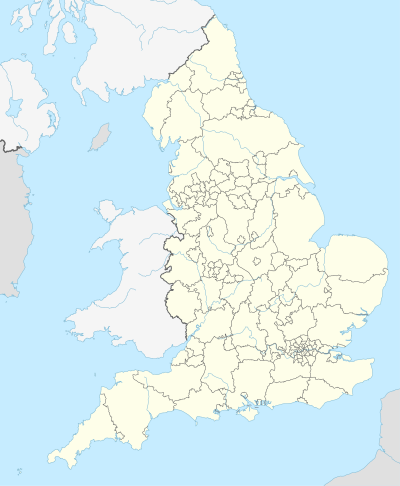The Device Forts, also known as Henrician castles and blockhouses, were a series of artillery fortifications built to defend the coast of England and Wales by Henry VIII.[2][a] They ranged from large stone castles, to small blockhouses and earthwork bulwarks.[4] Armed with artillery, the forts were intended to be used against enemy ships before they could land forces or attack vessels lying in harbour.[5] The castles were commanded by captains appointed by the Crown, overseeing small garrisons of professional gunners and soldiers, who would be supplemented by local militia in an emergency.[6] The Device programme was hugely expensive, costing a total of £376,000, much of it raised from the proceeds of the Dissolution of the Monasteries.[7][b]
The fate of the Device Forts over the coming years varied.[9] Some of the defences were left to deteriorate and were decommissioned only a few years after their construction.[10] Others were kept in service and used during the English Civil War, the Anglo-Dutch Wars, the Napoleonic Wars and, upgraded with more modern artillery and defences, throughout the 19th century.[11] By 1900, however, developments in guns and armour had made most of the Device Forts that remained in service simply too small to be practical in modern coastal defence.[12] Despite being brought back into use during the Second World War, by the 1950s those fortifications still in use were considered redundant and finally decommissioned.[13] Coastal erosion over the centuries had extensively damaged or completely destroyed some sites, but others have been restored and opened to the public as tourist attractions.[14]
- ^ Morley 1976, pp. 8–9
- ^ Harrington 2007, p. 11; Walton 2010, p. 70
- ^ Morley 1976, pp. 8–9; Harrington 2007, pp. 3, 8; Saunders 1989, pp. 37, 40
- ^ Harrington 2007, pp. 20–33; Morley 1976, pp. 8–10; Saunders 1989, pp. 37–38
- ^ Saunders 1989, p. 37
- ^ Saunders 1989, p. 47; Harrington 2007, pp. 37–39
- ^ Hale 1983, pp. 70–71
- ^ Lawrence H. Officer; Samuel H. Williamson (2014), "Five Ways to Compute the Relative Value of a UK Pound Amount, 1270 to Present", MeasuringWorth, retrieved 29 May 2015
- ^ Harrington 2007, p. 53
- ^ Harrington 2007, pp. 53–54
- ^ Morley 1976, pp. 37–41; Harrington 2007, pp. 53–55
- ^ Coad 2006, pp. 103–104, 109–110; Coad 2013, p. 18
- ^ Harrington 2007, p. 45; Saunders 1989, p. 225
- ^ Harrington 2007, p. 56; Crane 2012, p. 2; "St Andrew's Castle", Historic England, retrieved 2 August 2015; Spurgeon & Brooke 1996, p. 122; Tapete et al. 2013, p. 456; Harris 1980, p. 54; "Historic Environment Commissions Report: Impact", English Heritage, 2011, p. 15, retrieved 7 April 2016; "Tudor Blockhouse 300m South of Mersea Stone", Historic England, retrieved 7 April 2016; Symonds 1914, p. 33; Groves 1879, pp. 22–23; Norman 1920, p. 34; "Sandsfoot Castle", Historic England, retrieved 27 December 2015; "East Cowes Castle", Historic England, retrieved 26 May 2015
Cite error: There are <ref group=lower-alpha> tags or {{efn}} templates on this page, but the references will not show without a {{reflist|group=lower-alpha}} template or {{notelist}} template (see the help page).
